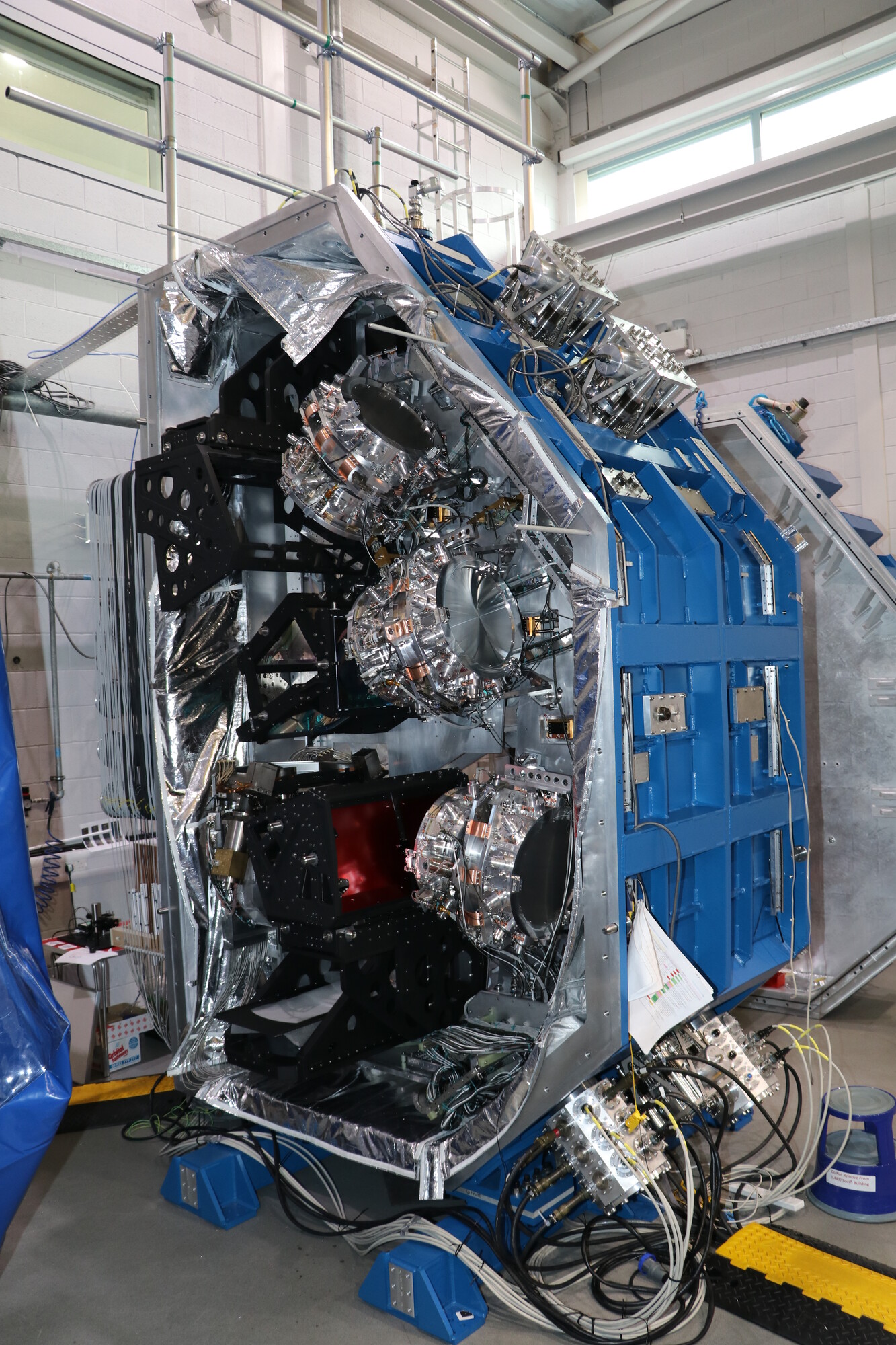 The UK ATC, is leading the international consortium to design, build and deliver MOONS to the European Southern Observatory (ESO). The consortium spreads over six different countries (UK, Italy, France, Portugal, Switzerland and Chile) and ESO.
The UK ATC, is leading the international consortium to design, build and deliver MOONS to the European Southern Observatory (ESO). The consortium spreads over six different countries (UK, Italy, France, Portugal, Switzerland and Chile) and ESO.
It will simultaneously provide optical to near-infrared spectra for up to 1000 objects. This will be the first-time astronomers will be able to simultaneously observe so many objects at these wavelengths, let alone being able to do this on an 8 metre-class telescope.
Its unique capabilities will be used to survey millions of stars and galaxies throughout most of the history of the universe, as the wavelengths MOONS utilises can see through galactic dust and observe more distant galaxies.
Combined with the power of the Very Large Telescope (VLT), MOONS will provide the tools necessary to study galaxy formation and evolution over most of the history of the Universe with unprecedented accuracy.
MOONS' optics operate at 130 Kelvin (-143C) while the detector works at 40 Kelvin (-233C) so the entire instrument needs to be cooled down. This required 5 tonnes of liquid nitrogen and what we still believe is the largest cryostat for any ground-based telescope.
MOONS will be delivered and installed at ESO's VLT at the Paranal Observatory in northern Chile with first light expected in 2026.
Find out more about MOONS.
